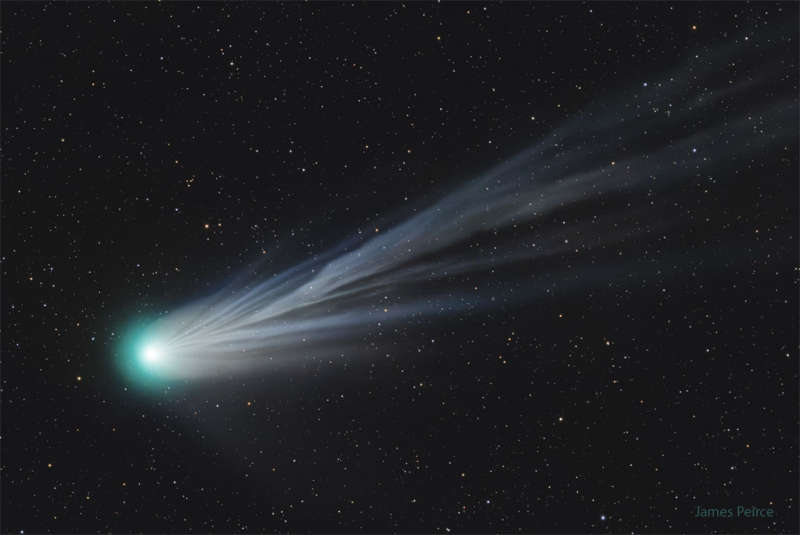 |
Астронет: Астрономическая картинка дня Ионный хвост кометы Понса-Брукса http://variable-stars.ru/db/msg/1924171/eng |
Credit & Copyright: James Peirce
Explanation:
Comet Pons-Brooks has quite a tail to tell.
First
discovered in
1385,
this erupting
dirty snowball loops back into our inner
Solar System every 71 years and, this time, is starting to
put on a show for deep camera exposures.
In the
featured picture, the light blue stream is the
ion tail which consists of charged
molecules
pushed away from the comet's nucleus by the solar wind.
The ion tail, shaped by the
Sun's wind and the
comet's core's rotation,
always points away from the Sun.
Comet 12P/PonsБBrooks
is now
visible
with binoculars in the early evening sky toward the northwest,
moving perceptibly from night to night.
The frequently flaring comet is expected to continue to brighten,
on the average, and
may even become visible with the unaided eye --
during the day -- to those in the
path of totality of the coming solar eclipse on April 8.
Authors & editors:
Robert Nemiroff
(MTU) &
Jerry Bonnell
(USRA)
NASA Web Site Statements, Warnings,
and Disclaimers
NASA Official: Jay Norris.
Specific
rights apply.
A service of:
LHEA at
NASA /
GSFC
& Michigan Tech. U.
